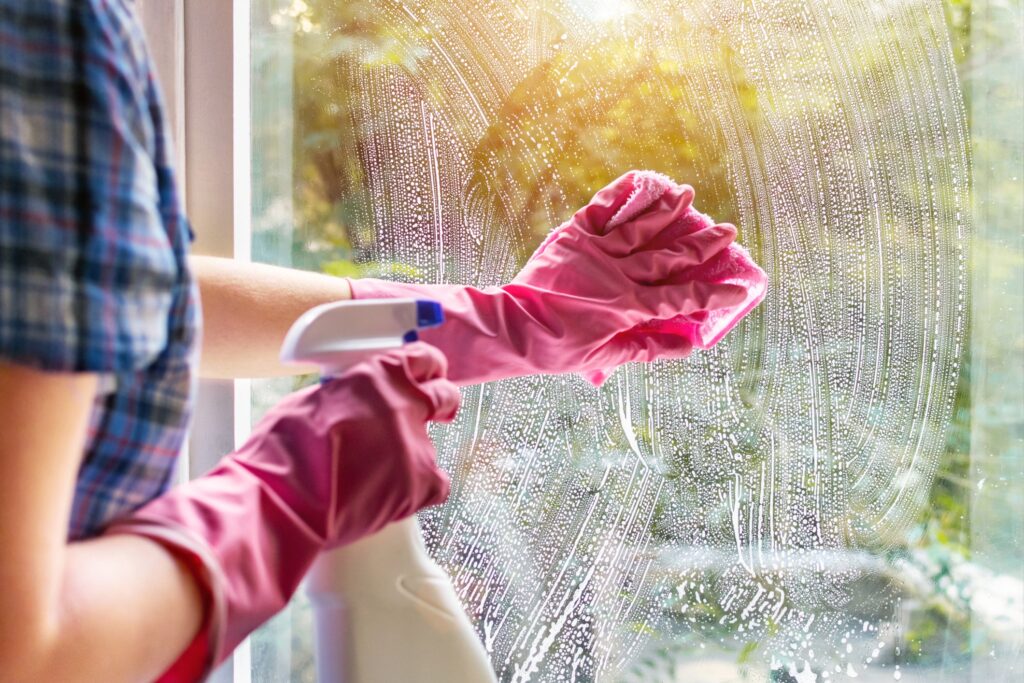Cleaning your windows may seem like an easy and quick task, but many people make a common mistake that ruins all their efforts. The result? Streaks, dull reflections, and a feeling that the glass is even dirtier after cleaning. If you’ve ever felt that your windows are never truly clean, it’s likely due to this widespread error. Discover what to avoid and the best methods to achieve spotless windows without unnecessary effort.

The mistake that everyone makes without realizing it
The main mistake many people make when cleaning their windows is using unsuitable cloths. Paper towels, dishcloths, ordinary sponges… These tools have a major flaw: they leave microfibers and lint on the glass, making the surface appear dull and less clean than before.
Another common issue arises from overusing cleaning products. Many believe that using more product will lead to cleaner windows. However, in reality, excess cleaner can leave a greasy film or visible residues after drying, especially if the product is not well distributed or wiped off properly.
But the most frequent and damaging mistake is cleaning windows in direct sunlight. This may seem like a good idea as the light helps spot dirt. Nevertheless, heat accelerates the evaporation of the cleaner, resulting in immediate streaks that are hard to remove. The outcome? Windows with marks and a sensation of incomplete cleanliness.
The right gestures for spotless windows
Fortunately, by changing a few habits, it’s possible to achieve perfectly clean windows without extra effort. Here are the best techniques to adopt:
1. Select the right tools
- Opt for a microfiber cloth: Unlike paper towels or old rags, it leaves no lint or streaks. It also absorbs moisture effectively, ensuring a perfect finish.
- Use a quality squeegee: This helps remove excess product and prevents marks left by uneven drying.
- Avoid using standard sponges: They hold too much water and may leave marks on the surface.
2. Choose an effective and natural cleaner
- White vinegar is your ally: Mix one part white vinegar with one part hot water. This natural mixture degreases without leaving residues and prevents dirt from accumulating over time.
- Avoid overly aggressive products: Some chemical cleaners leave a greasy film that attracts dust more quickly.
3. Clean your windows at the right time
- Choose a cloudy day or early morning/late afternoon: This will prevent the product from drying too quickly, minimizing streaking.
- Avoid cleaning after rain: Rainwater may contain impurities that leave deposits on the glass.
4. Adopt the right technique
- Start by dusting: Before applying the cleaner, wipe the window with a dry cloth to remove dust and small particles. This prevents creating unsightly mud by mixing dirt with the cleaner.
- Clean with circular movements to dislodge dirt effectively, then wipe using vertical or horizontal motions to avoid streaks.
- Change cloths regularly to avoid spreading dirt from one area to another.
A tip to keep windows clean longer
If you’re tired of cleaning your windows too often, a simple tip can help: use an anti-static treatment. These are available commercially, but you can also make a homemade solution by mixing a teaspoon of glycerin with your cleaning mixture. This will create a fine protective film that repels dust and delays the appearance of fingerprints.
Say goodbye to streaky windows!
By avoiding this common error and applying these simple tips, you will finally achieve sparkling windows with no annoying reflections or persistent streaks. Proper tools, a natural product like white vinegar, and cleaning at the right time are all you need for an impeccable result. So, are you ready to say goodbye to dull and dirty windows?

